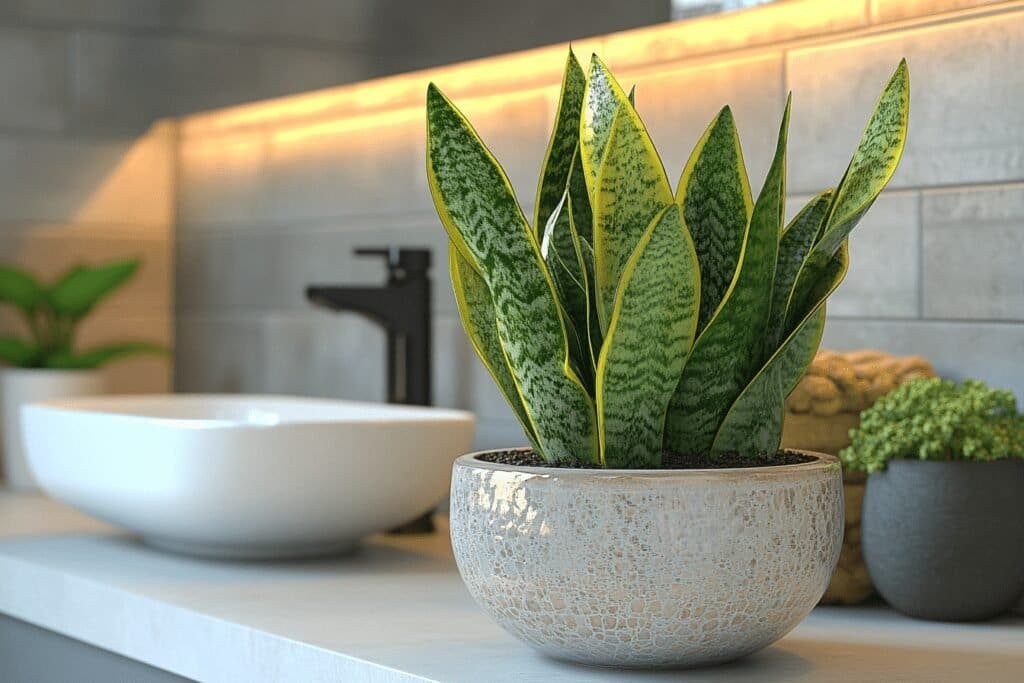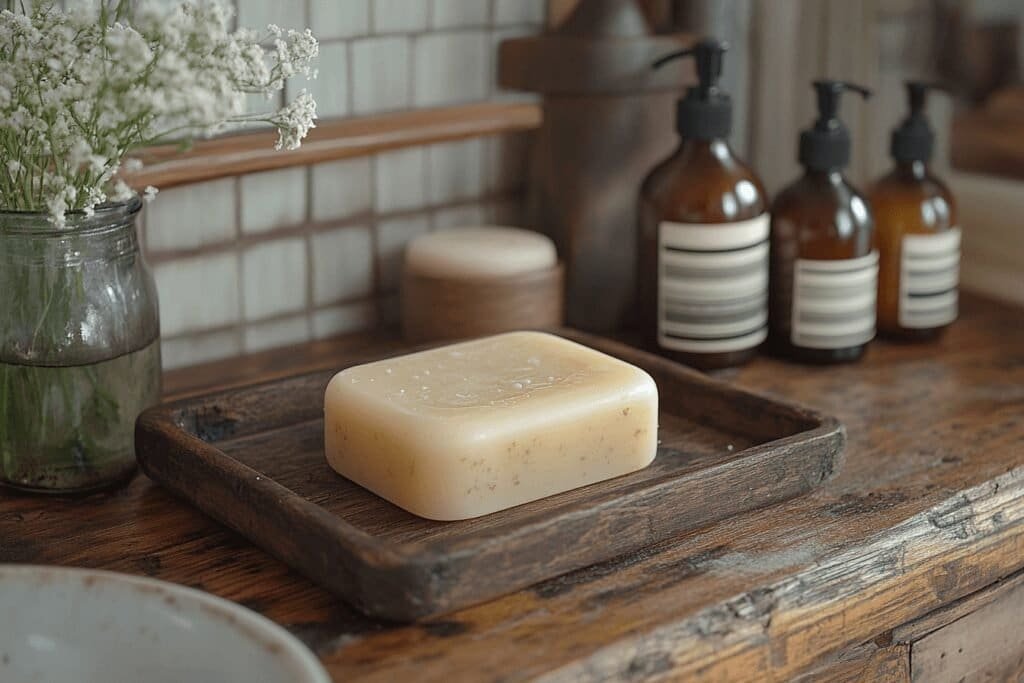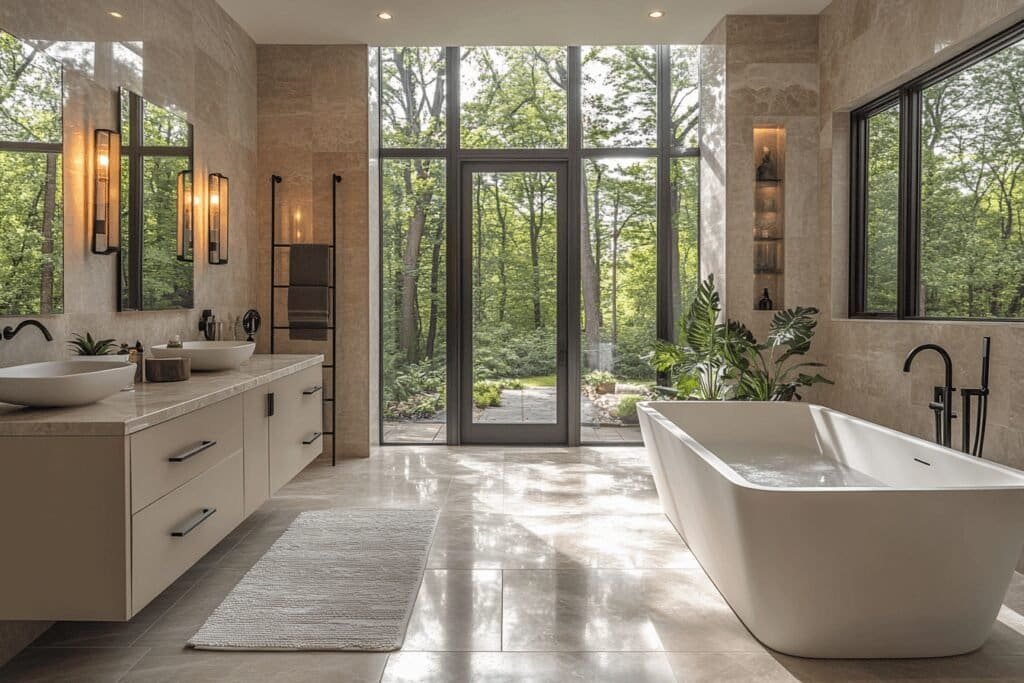Bathrooms are often overlooked when it comes to interior design, but they present a unique opportunity for incorporating greenery into your home. The right bathroom plants can transform the space, bringing a touch of nature that elevates both the aesthetics and atmosphere. However, bathrooms are typically low light and humid environments, which makes choosing the right plants crucial. Fortunately, many plants not only survive but thrive in these conditions. In this guide, we’ll explore the best plants for low light bathrooms, helping you select greenery that will flourish while enhancing your bathroom decor and design.
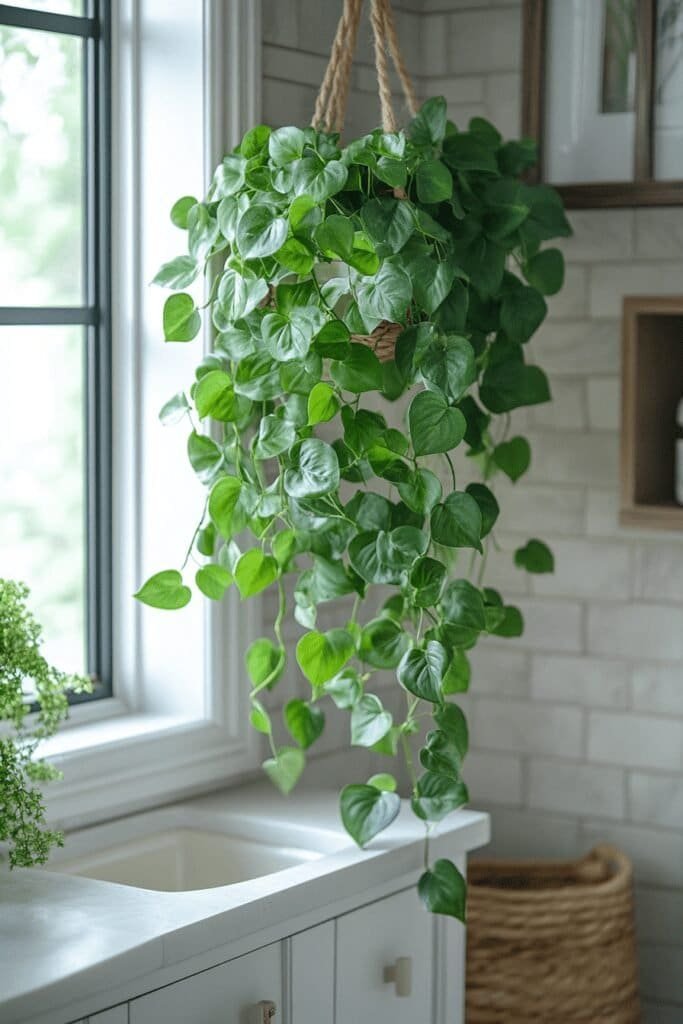

1. Why Plants are Perfect for Bathrooms
Adding plants to your bathroom can do more than just improve the look of the space. They enhance bathroom decor, improve air quality, and bring a sense of calm. Whether you have a large bathroom or a small, cozy space, the right plants can make a significant difference.
Benefits of Plants in Bathroom Design:
- Improved Air Quality: Plants like the peace lily and spider plant are known for their air-purifying qualities. These plants help remove toxins from the air, which is especially beneficial in humid bathrooms where air circulation may be limited.
- Natural Humidity Regulation: Some plants actually thrive in humid environments because the moisture in the air helps them grow. This makes them ideal for bathrooms, especially those with showers that create a naturally damp environment.
“Bathrooms are the perfect spot for low light, humidity-loving plants like ferns and snake plants,” says Jenna, a plant shop owner. “These plants not only look great but also thrive in conditions where other houseplants would struggle.”
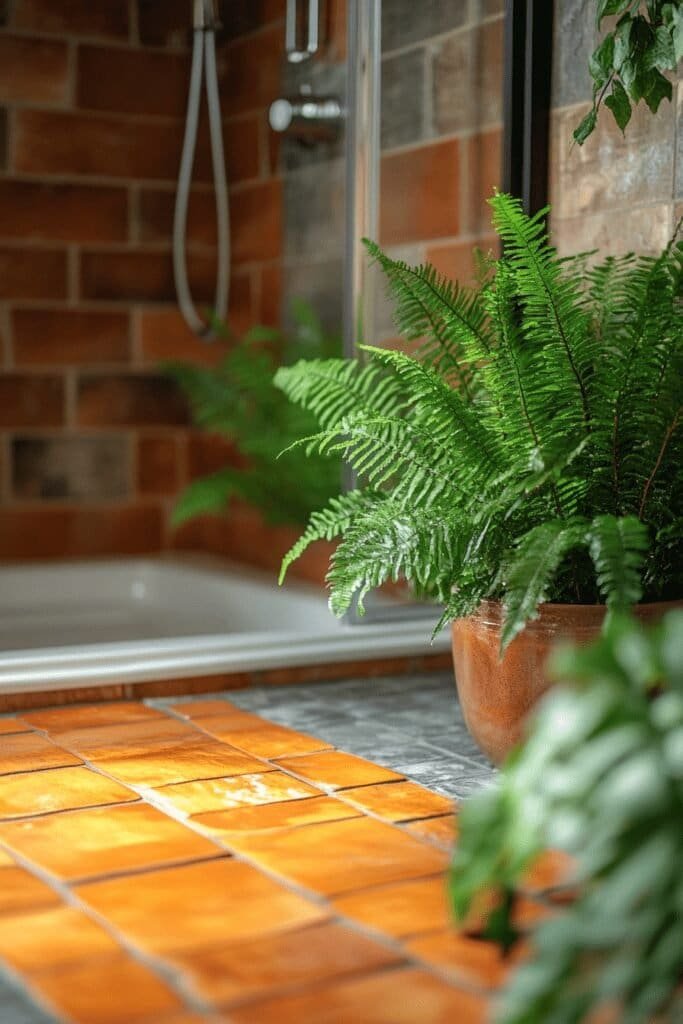

2. What Makes Bathrooms Challenging for Plants?
Bathrooms are often not the easiest places to grow plants. They’re typically small, receive little to no natural light, and have fluctuating humidity levels depending on how often the shower is used. For plant lovers, this can be frustrating. However, several species are well-suited for these conditions.
Defining Low Light Conditions
When we talk about low light, we’re referring to spaces that receive indirect or very little sunlight. Most bathrooms have frosted windows or are completely windowless, which limits the amount of light plants can get. Low light plants are those that have adapted to survive without direct sunlight, making them perfect for these spaces.
Humidity and Plant Growth
While many houseplants struggle in humid conditions, some thrive in them. High humidity prevents the plants from drying out, and moisture-loving plants like ferns and peace lilies often do better in bathrooms than other areas of the house.
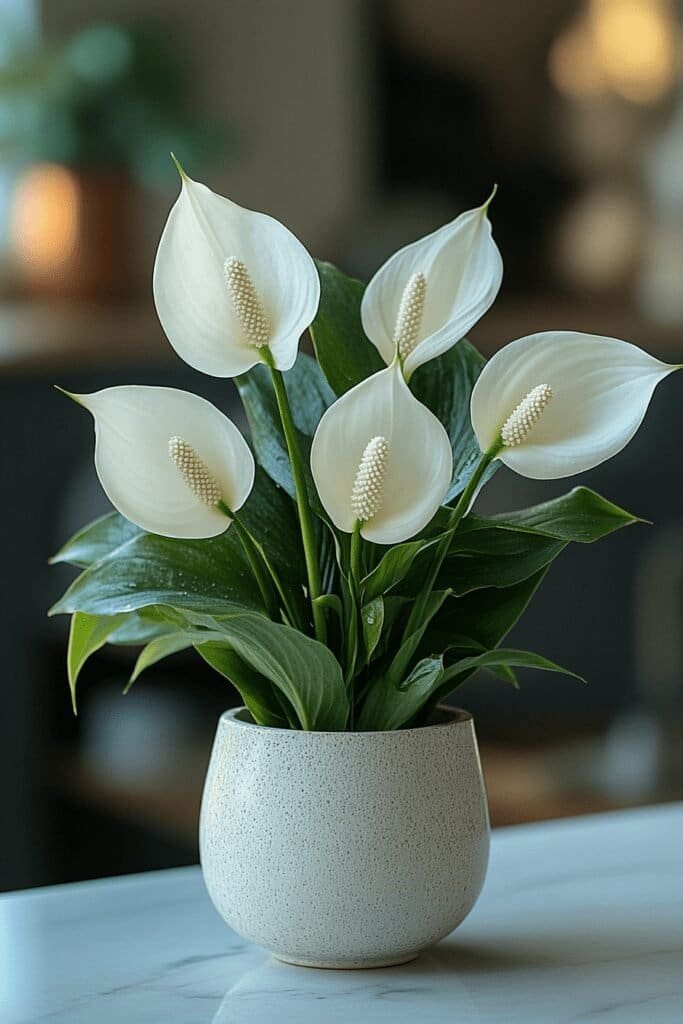

3. Best Plants for Low Light Bathrooms
Now that we understand what makes bathrooms challenging for plants, let’s dive into the best plants that not only survive but thrive in these conditions.
3.1. Snake Plant (Sansevieria)
The snake plant is the king of low-maintenance plants. It thrives on neglect and can survive in the darkest corners of your bathroom. It’s one of the best plants for low light bathrooms due to its ability to tolerate low light and humid environments. Its tall, sword-like leaves bring a modern touch to any bathroom design.
3.2. Pothos (Devil’s Ivy)
Pothos is a fantastic plant for bathrooms. Not only does it tolerate low light, but it can also thrive in humidity. It’s a vining plant, so you can place it on a high shelf and let the leaves trail down, adding elegance to your bathroom decor.
“I’ve had a pothos hanging in my bathroom for years, and it grows beautifully with very little effort,” says Angela, a homeowner who has incorporated real plants into her bathroom decor.
3.3. Ferns
Ferns are humidity-loving plants, which makes them perfect for bathrooms. Their feathery fronds add a lush, tropical feel to any bathroom space. Boston ferns, in particular, thrive in warm, steamy environments, making them a great choice for placement near the shower.
3.4. Spider Plant
The spider plant is another excellent choice for a low light bathroom. Known for its air-purifying qualities, the spider plant can help cleanse the air of moisture-related toxins. It’s also incredibly easy to care for and produces baby plants that you can propagate and add to other parts of your home.
3.5. Peace Lily
The peace lily is a beautiful and elegant plant that not only thrives in low light but also helps filter out toxins from the air. It’s ideal for bathrooms because it loves the humidity created by a hot shower. The peace lily’s dark green leaves and white blooms make it a lovely decorative plant for bathrooms with neutral tones.
3.6. ZZ Plant
The ZZ plant is nearly indestructible and can survive in almost complete darkness. This makes it one of the best choices for bathrooms with no natural light at all. The ZZ plant’s glossy, dark green leaves add a modern, clean look to your bathroom design.
3.7. Cast Iron Plant
True to its name, the cast iron plant is as tough as they come. It can handle low light, humidity, and neglect. Its broad, deep green leaves bring a sense of calm and serenity to the bathroom, making it a popular choice for minimalistic or modern bathroom designs.
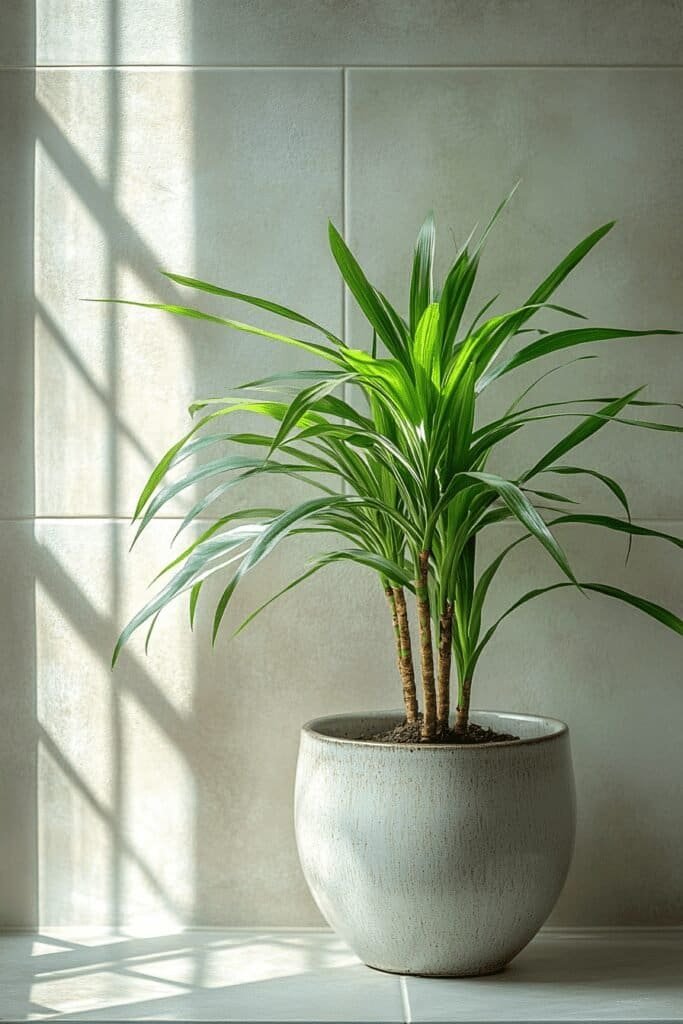

4. Real vs. Plastic Plants: What Homeowners Say
When it comes to bathroom plants, not everyone opts for the real deal. For some, the idea of maintaining real plants in a bathroom with little light can seem daunting. Let’s hear from homeowners who’ve chosen both real and artificial plants for their bathroom decor.
- Real Plant Enthusiast: “The peace lily in my bathroom has flourished. It’s been a great addition to my decor with minimal effort,” says Laura, who enjoys the calming presence of live plants in her bathroom.
- Artificial Plant Advocate: “I chose artificial plants for my bathroom because they add a pop of green without needing any care,” says Mike, who appreciates the look of plants but prefers the no-maintenance aspect of plastic.
Artificial plants are a great option if your bathroom has no light or if you simply want a hassle-free way to add greenery to your bathroom decor.
5. Tips for Taking Care of Low Light Bathroom Plants
While the plants listed above are easy to care for, it’s essential to know how to take care of them properly in a bathroom setting. Here are some quick tips:
- Watering: Bathrooms are humid, so many plants don’t need to be watered frequently. Check the soil before watering to ensure it’s not already damp.
- Rotating Plants: If your bathroom has little to no natural light, consider rotating your plants to a brighter spot occasionally to give them a bit of a “sun boost.”
- Preventing Overwatering: Bathrooms can be humid environments, so be careful not to overwater your plants, as the moisture from the air will help hydrate them naturally.
6. Creative Ideas for Incorporating Plants into Bathroom Design
Plants can complement any bathroom design, whether modern, minimalistic, or boho. Here are some ideas for incorporating plants:
- Hanging Planters: If you’re short on space, consider hanging plants like pothos or ferns from the ceiling or above the sink.
- Corner Plants: Larger plants like the snake plant or cast iron plant look great in empty bathroom corners, adding life without cluttering the space.
- Shelves and Window Ledges: If you have shelves or a window ledge, these are perfect spots for smaller plants like spider plants or peace lilies.
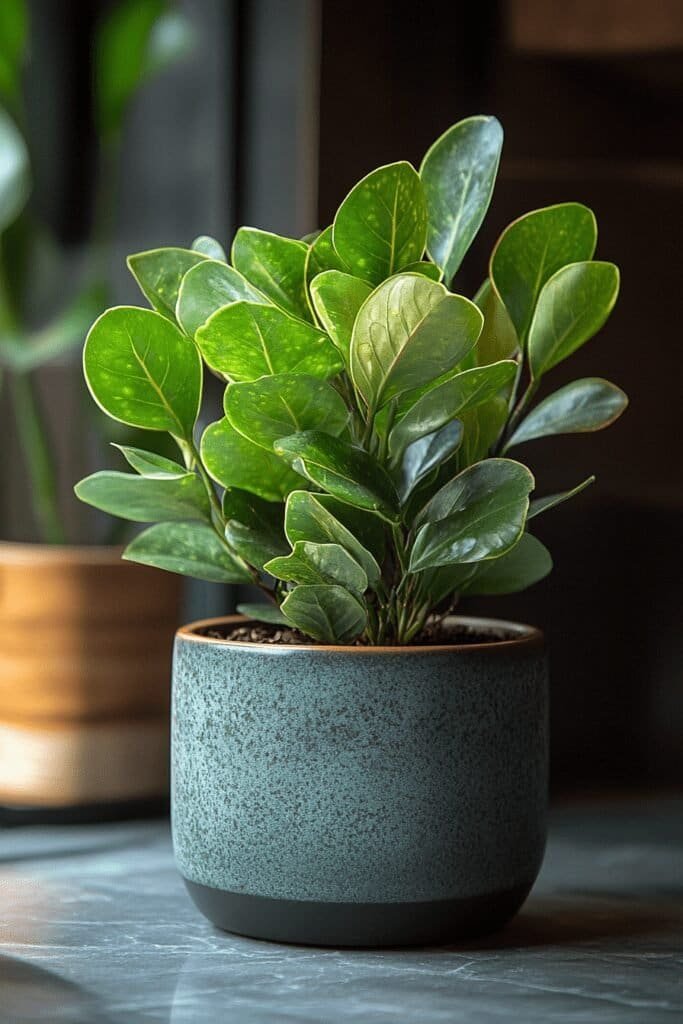

7. Why Artificial Plants Are a Great Option for Bathrooms
For those who love the look of greenery but aren’t keen on caring for real plants, artificial plants are a fantastic option for bathrooms, especially in spaces with little to no natural light. High-quality artificial plants can add the same vibrancy and natural beauty as live plants, with none of the maintenance. They’re perfect for homeowners with busy lifestyles or for those who may lack the ideal conditions for plant growth. Best of all, artificial plants require no watering, trimming, or repotting, making them a set-it-and-forget-it decor solution.
In modern bathroom design, artificial plants are often used in minimalist spaces where clutter is kept to a minimum. They can be placed on floating shelves, countertops, or in decorative pots that complement the bathroom’s color scheme. As artificial plants come in a wide variety of shapes and sizes, you can still mimic the feel of a real snake plant, pothos, or ferns without worrying about lighting or humidity. Many homeowners find that combining a few real plants with artificial ones can create a balanced, lush look that enhances the bathroom decor without the upkeep.
By blending real and artificial greenery, you get the best of both worlds—style and simplicity.
Conclusion
Incorporating plants into your bathroom design not only enhances the overall decor but also improves air quality and adds a touch of nature to an otherwise sterile space. Whether you opt for resilient, real plants like the snake plant or pothos, or prefer the convenience of artificial plants, there are plenty of options that will thrive in a low light and humid environment. So, why not bring some life into your bathroom and transform it into a lush, green sanctuary?
Disclaimer: As an Amazon Associate, I earn from qualifying purchases. This means that if you click on certain links on this site and make a purchase, I may receive a small commission at no additional cost to you.
